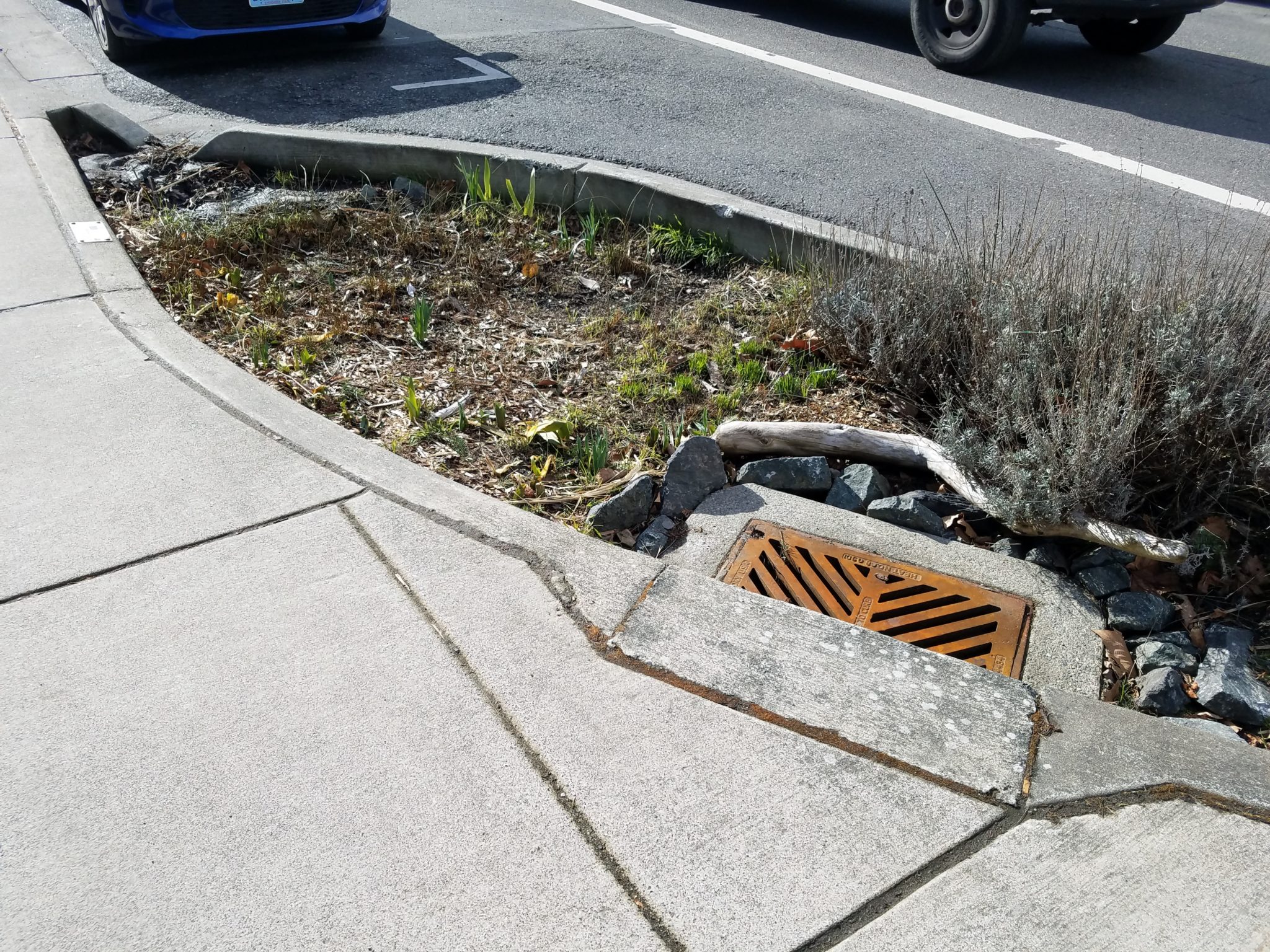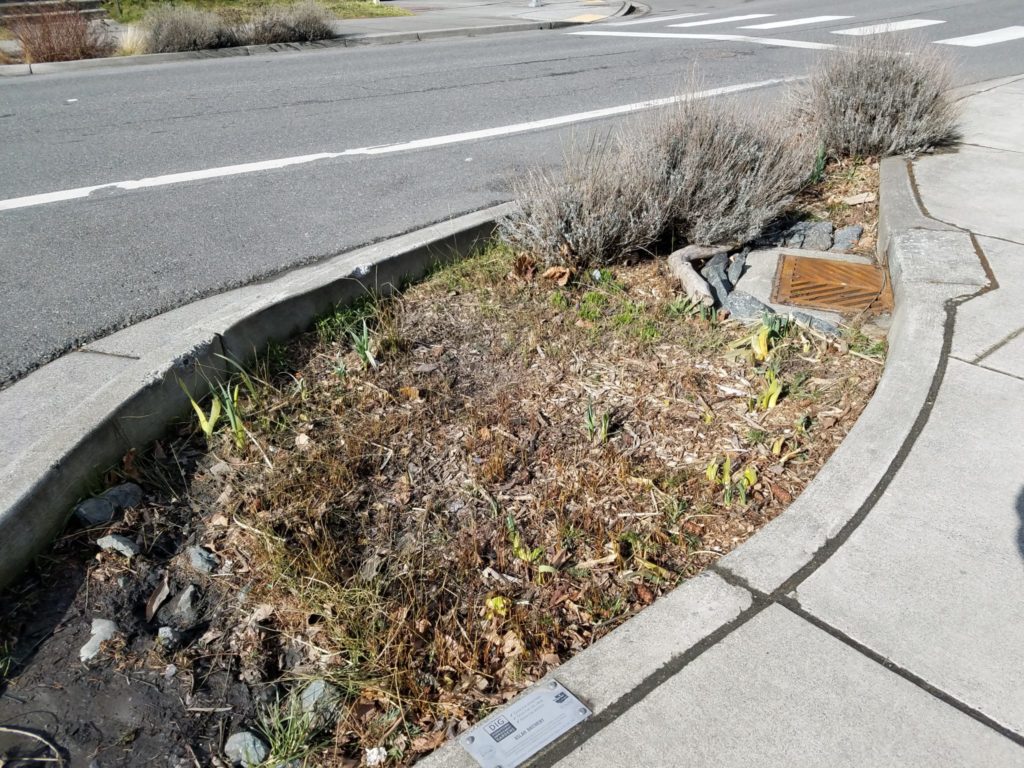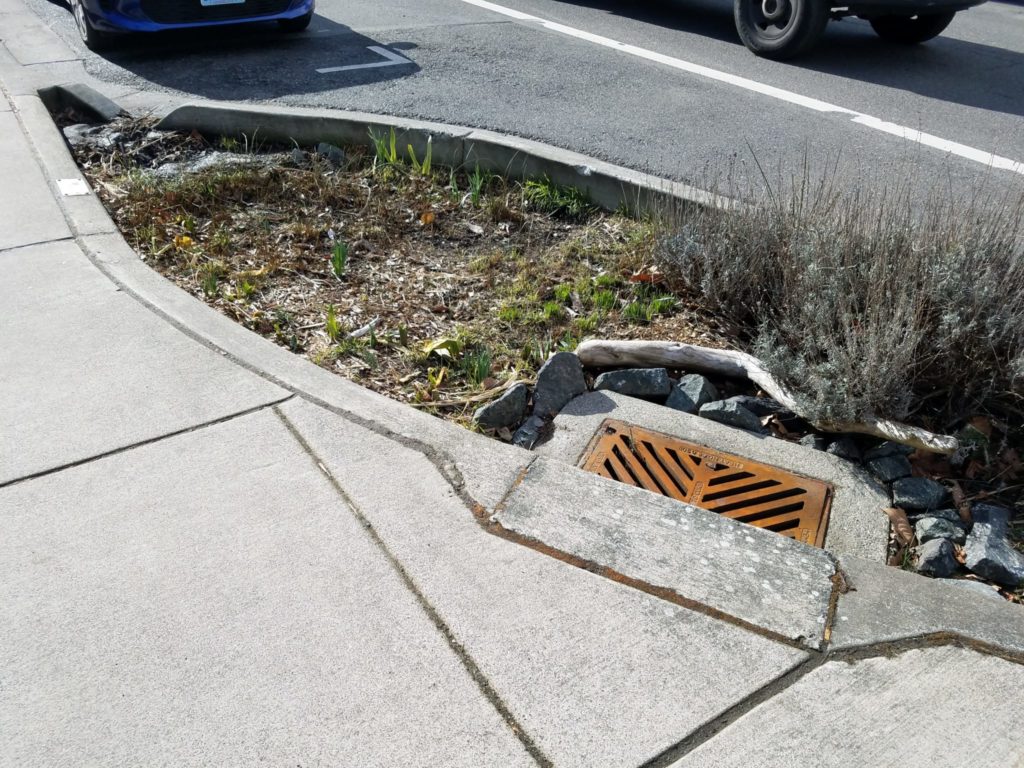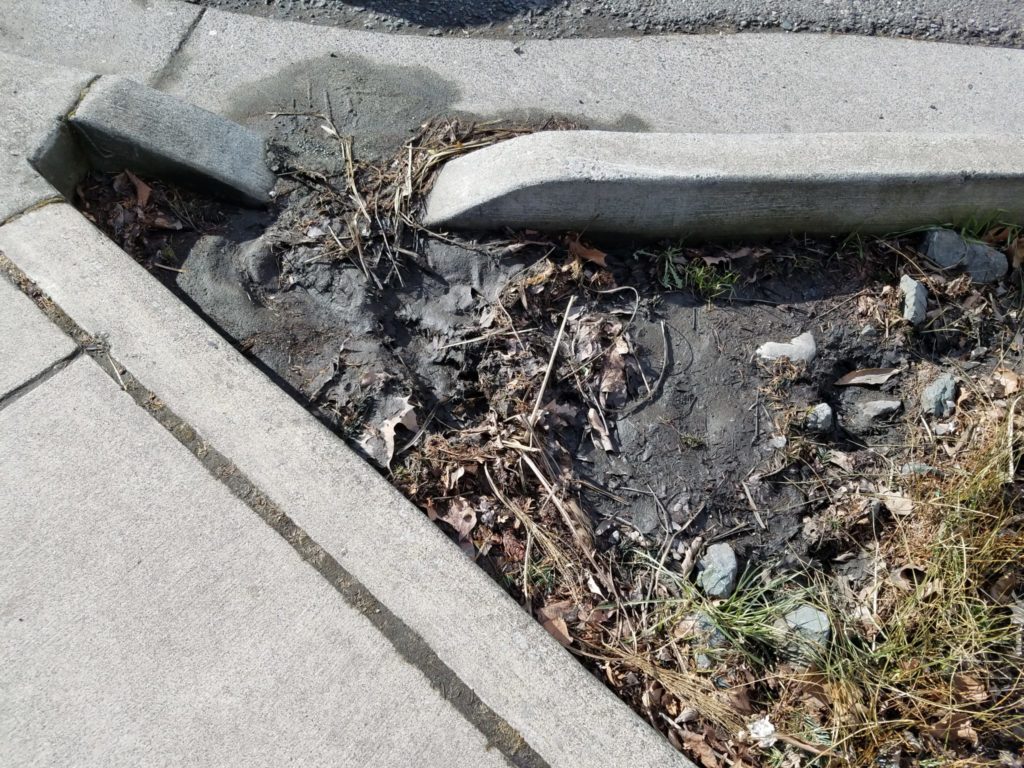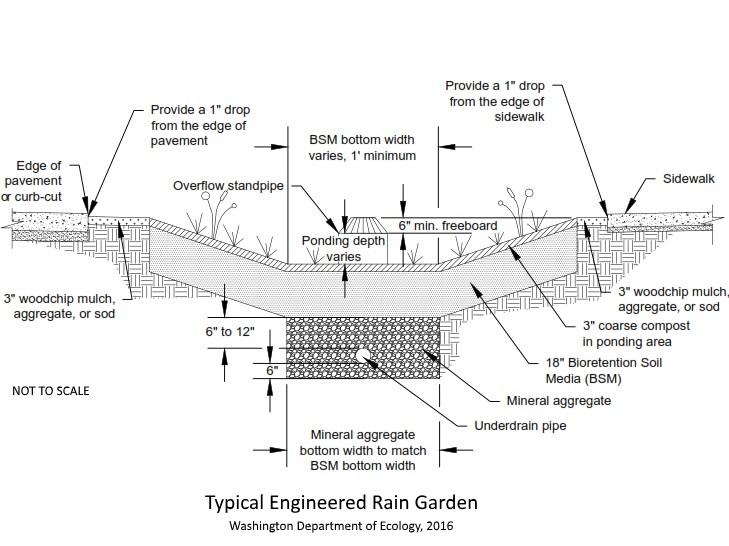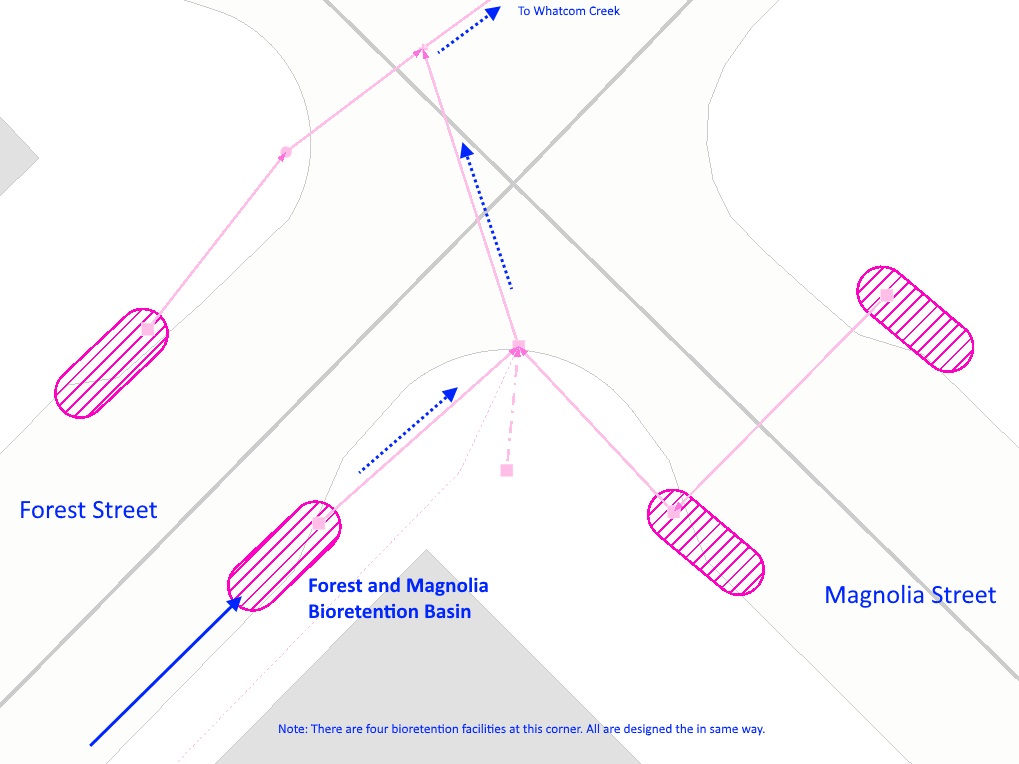Where is this located? It’s at the three-way corner of Forest Street and Magnolia in front of Aslan Brewery.
What’s special about this place? This engineered rain garden is one of four at this intersection. Their installation was part of a pedestrian safety improvement. Look for the other three rain gardens nearby. They are all designed the same way and treat water from Forest and Magnolia streets before sending it to Whatcom Creek.
image gallery
select any photo to see a slideshow
